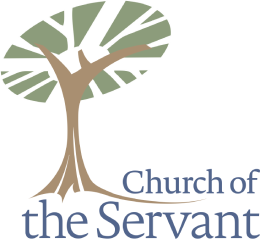
Forty or fifty years ago, there wasn’t much question of what one would find when opening a hymnal: congregational songs displayed in four-part harmony. Ah…glorious SATB! There is nothing like the sound of a congregation raising its praise in a robust balance of soprano, alto, tenor, and bass. Many of the best singing congregations in Reformed, Mennonite and Lutheran traditions don’t even need the support of organ or piano to complete their harmonies.
It is no understatement to say that hymnody in 2010 is substantially more fragmented. One of the biggest complaints about recent changes in hymnody is that many songs are no longer shown in four parts. Some people see this as a dumbing down of church music—reducing a song to melody limits a congregation’s musical options, stretches basses out of their comfort zone, and leads to musical illiteracy. And don’t get them started on projection screens!
On the one hand, I’m extremely sympathetic to this point of view—I sometimes wonder if the modern Church has sold its birthright for whatever scintillating pot of porridge our insatiable souls encounter. On the other hand, a four-part-fits-all approach doesn’t do justice to the magnificent variety of singing in God’s Kingdom. Four-part singing is just one of the ways groups sing together; we should be open to exploring other ways of joining our voices in worship.
All music is made up of some combination of melody, harmony, and rhythm. Each music style emphasizes some of these elements while diminishing others, and every music style distributes the elements differently. For example, a Bach chorale features wonderfully sophisticated harmonies, but its rhythms are bland compared to Salsa. The austere balance of Chinese melodies or Gregorian chant comes at the expense of rhythm and harmony.
It is tempting to champion our own culture’s songs as the perfect blend of musical elements. Some go so far as to argue that their own music is somehow more biblical than other possibilities. Many in the 19th century did just that, elevating Western hymnody while demonizing local music expressions of worship. But today we are coming to realize that the diversity of musical styles in Christ’s Church is actually a precious gift.
If we are to sing everything from Ralph Vaughan Williams to Thomas Dorsey to Chris Tomlin (and we should) then a four-part vocal structure won’t always work. For example, in Black Gospel, Latin American Coritos, and the Praise & Worship genre, there is a clear melody/accompaniment musical texture. Forcing these styles into SATB vocal parts straightjackets their natural beauty. Taizé chants and African choruses call for musical flexibility as the leader and people respond to each other with variations of text and melody. These are sung effectively “off the page”—learned by rote and developed in the moment using call-and-response.
Even within historic Western hymnody, there are examples of music that are most appropriately sung melody only: Gregorian chant, Genevan Psalms, early Lutheran hymnody. These often appear in our hymnals in four-part arrangements, but were originally intended for unison singing. Churches that sing them in their original forms will be blessed by their profound simplicity.
Hymnals and church bulletins should match the appropriate printed format to each vocal style. Use the traditional four-part, two-stave format whenever appropriate, but also make ample use of unison or two-part notation as style dictates. I would go so far as to suggest that showing only the text is the right decision for some types of syncopated music—it’s too daunting to sight-read from the page and works better when you simply sing it like you’d speak it.
Every congregation should develop, maintain, and delight in the discipline of four-part singing from a hymnal. But they should also develop the ability to confidently sing an unadorned unison line, improvise harmonies, and respond to a leader’s cues. This isn’t dumbing down. It is simply acknowledging that God’s song—just like God’s people—come in many different shapes and sizes. Now that’s perfect harmony.
Can’t tell a unison melody from a soprano solo? Contact Greg Scheer.
